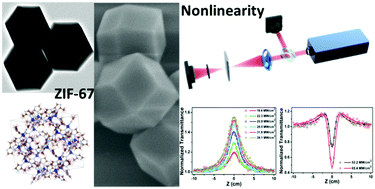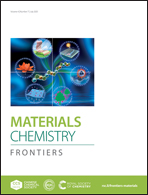Optical nonlinearity of zeolitic imidazolate framework-67 in the near-infrared region
Abstract
In this paper, we report the large optical nonlinearities of zeolitic imidazolate framework-67 (ZIF-67) in the near-infrared (NIR) region. Typical Z-scan techniques were carried out to determine the nonlinear optical (NLO) performance of ZIF-67 at 1.06 and 1.34 μm. With increased excitation pump intensity, a reinforcement of the saturable absorption was observed. With the excitation wavelength at 1.06 μm, the largest effective nonlinear absorption coefficient βeff was −0.85 cm GW−1 and the highest modulation depth ΔT was 29.1%. For a wavelength of 1.34 μm, the maximum βeff and ΔT of ZIF-67 were −0.87 cm GW−1 and 19.8%, respectively. The complete optical limiting behavior of ZIF-67 was also investigated with increased pump intensity. The large two-photon absorption (TPA) cross sections (∼8.5 × 106 GM) made ZIF-67 suitable for possible applications as optical limiting devices. In addition, the nonlinear refractive index n2, and real and imaginary parts of the third-order NLO susceptibility were also determined. This work explores the NLO properties of ZIF-67 in the NIR regime comprehensively and will benefit potential NLO-based applications of optical modulators, optoelectronics and optical limiting devices.



 Please wait while we load your content...
Please wait while we load your content...